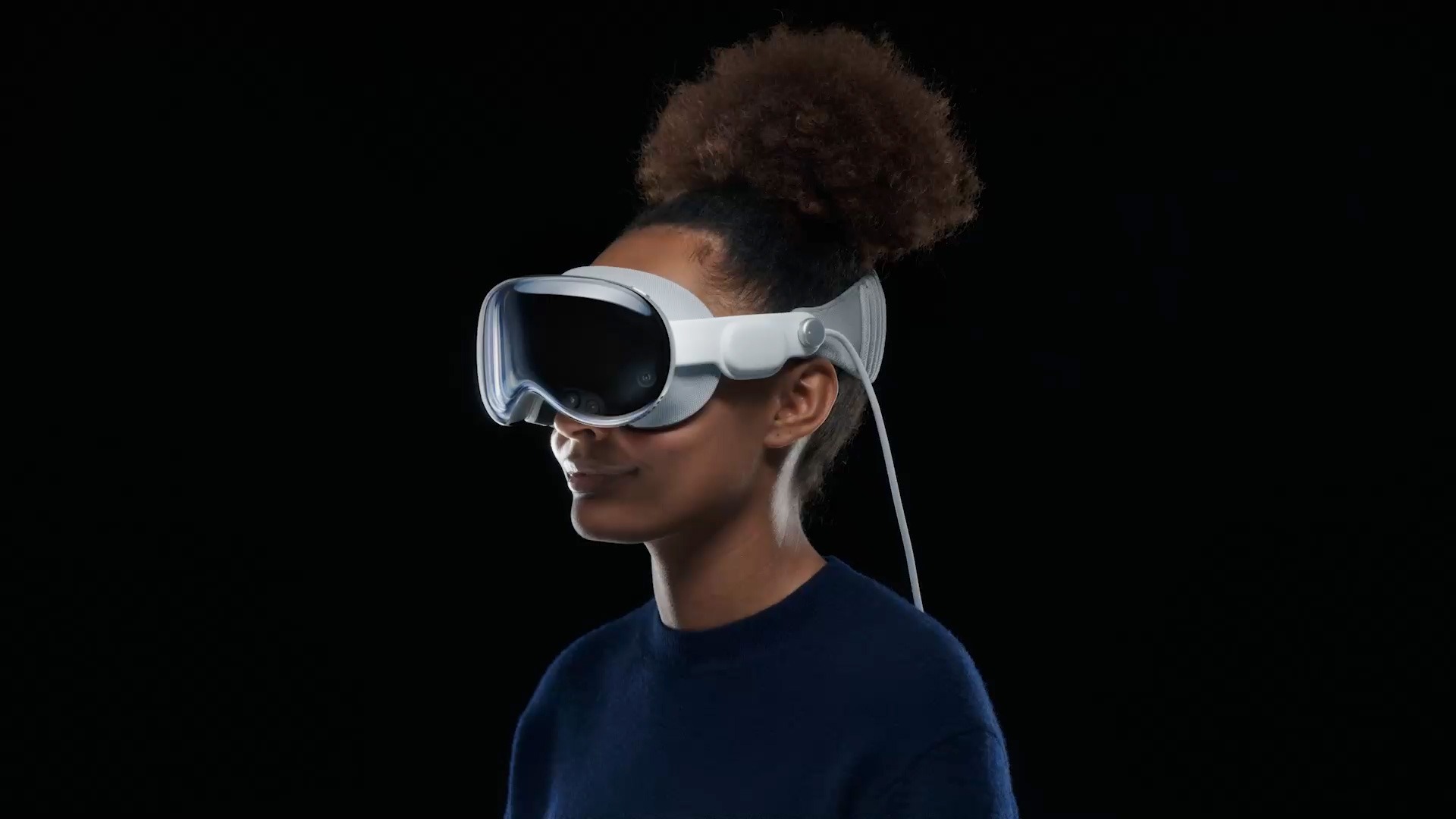After years of speculation and billions of dollars in investment, Apple has finally revealed its long-awaited virtual reality (VR) headset with its blockbuster price of $3,499 being the biggest talking point.
The iPhone maker is branding the headset – dubbed Vision Pro – as a ‘spatial computer’ designed to operate both as a standalone device and as an extension for Mac computers. It primarily will use cameras and passthrough technology for augmented reality (AR) functions, but it can be switched to full VR via the use of a dial on the headset.
Along with the blockbuster price tag which squarely puts it as an enterprise device, one of Vision Pro’s most controversial features is its controller-free design. While users can pair Bluetooth devices like mouse, keyboards and game controllers, the main way to interact with the device is through eye tracking and hand gestures. The device features downward facing cameras which Apple says will track a user’s hands even if they are positioned low.
In a spectacular reveal at Apple's Worldwide Developer Conference (WWDC), the company confirmed many long-rumoured specs for the headset including a glass front which can appear transparent to others (a feature called EyeSight), an external battery pack, and an aluminium frame containing five sensors, 12 cameras and a 4K display for each eye. Apple said that the display is so sharp (a common issue for VR headsets) and its speaker system so sophisticated that it could effectively replace a home cinema setup.
The device, which runs a custom OS, will run on Apple silicon. It uses an M2 chip, but also sees the debut of a new chip called the R1.
However while the specs are market-leading for VR/AR headsets, Apple in its presentation was keen to stress the functionality, usability and availability of apps ahead of the tech itself. Disney chief exec Bob Iger appeared during the presentation to confirm that Disney+ will be available on Vision Pro on day one while Microsoft confirmed its Office suite will also be available on the device.
The company also demonstrated how the device would function as a conferencing device. In a move which makes Meta's deployment of 3D digital avatars look amateurish, Vision Pro uses its external sensors and cameras to scan the user's face and create a avatar which combines AI tech akin to what is used by deepfakes with motion tracking to create a hyperrealistic representation of the user for calls.
Apple also said that hundreds of games will be playable on launch day via its Apple Arcade subscription service – though these games initially look as though they are traditional videogames being played on a virtual display in the headset rather than the immersive experiences offered by Meta and PlayStation.
However at such a high price point, the company is fully expecting initial adoption to come from hardcore tech enthusiasts and the enterprise market. This is alluded to by the ‘Pro’ moniker – a title Apple has historically given to its higher end devices – and hints that a potentially cheaper ‘Apple Vision’ device could come further down the line as a more general consumer proposition.
Vision Pro represents the first major product line launch from Apple since the Apple Watch in 2015. Apple Watch, like the iPhone before it, immediately became a market leader and proved wearables to be a lasting consumer tech category. The company will hope that Vision Pro can build the same momentum in a category which has seen enthusiasm wane since Meta’s launch of the Quest 2 in 2020.
Apple's Vision Pro will launch in 2024 in the US starting at $3,499.
During its WWDC presentation, Apple revealed a swathe of software and hardware upgrades across its entire line. These included the reveal of a 15-inch MacBook Air, the next generation of MacOS (dubbed ‘Sonoma’ after the famous wine growing region of California), iOS 17 and software updates for AirPods Pro headphones.
Latest News
-
The top technology trends to expect in 2026
-
The most read National Technology News stories of 2025
-
Lyft and Uber sign deals with Baidu for robotaxi trial in London
-
Nextdoor launches AI-driven self-serve ads platform for small businesses
-
Italy's antitrust fines Apple €98.6m over alleged App Store dominance
-
Visa partners with UAE real estate firm to launch voice-enabled agentic commerce payments
The future-ready CFO: Driving strategic growth and innovation
This National Technology News webinar sponsored by Sage will explore how CFOs can leverage their unique blend of financial acumen, technological savvy, and strategic mindset to foster cross-functional collaboration and shape overall company direction. Attendees will gain insights into breaking down operational silos, aligning goals across departments like IT, operations, HR, and marketing, and utilising technology to enable real-time data sharing and visibility.
The corporate roadmap to payment excellence: Keeping pace with emerging trends to maximise growth opportunities
In today's rapidly evolving finance and accounting landscape, one of the biggest challenges organisations face is attracting and retaining top talent. As automation and AI revolutionise the profession, finance teams require new skillsets centred on analysis, collaboration, and strategic thinking to drive sustainable competitive advantage.
© 2019 Perspective Publishing Privacy & Cookies








Recent Stories